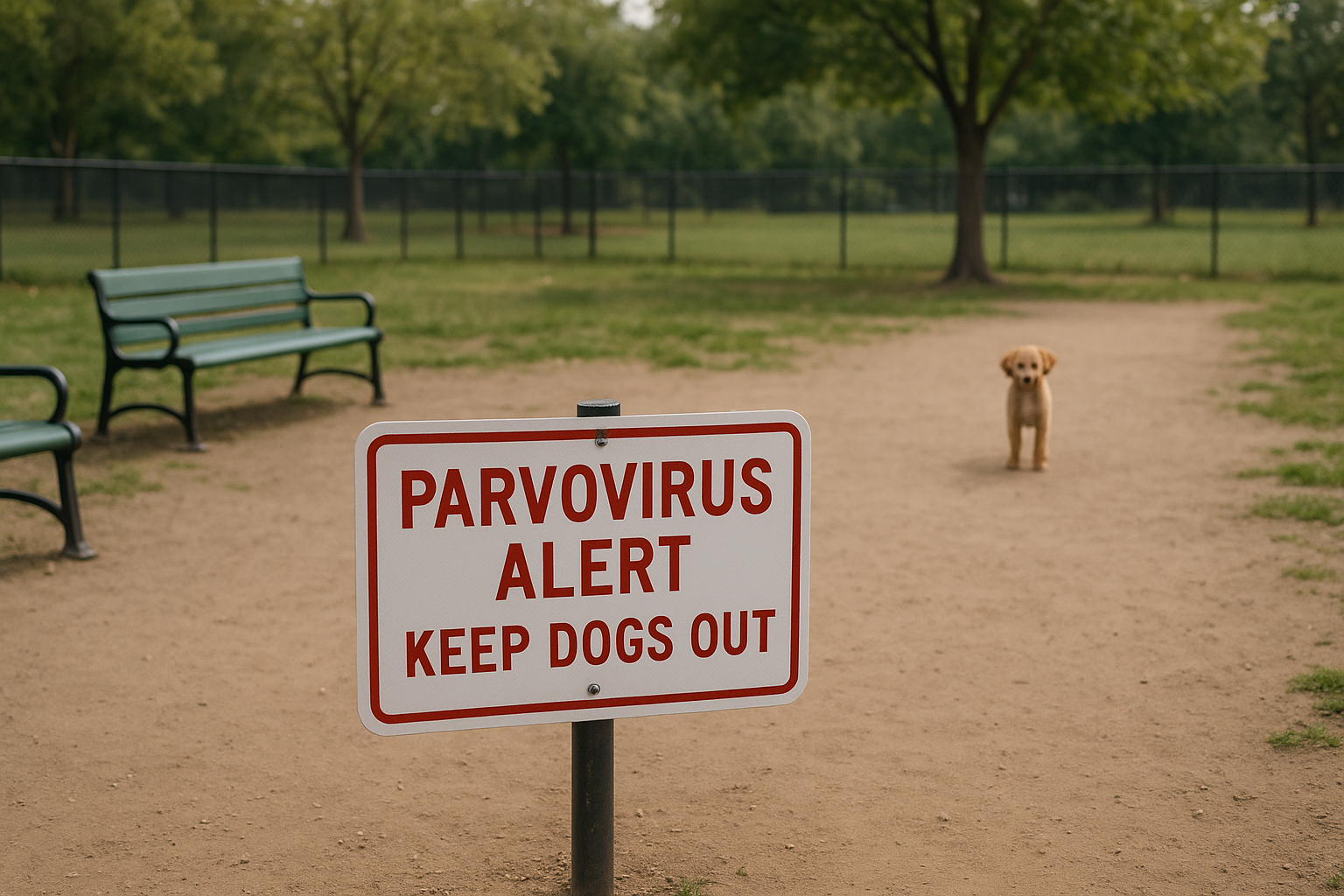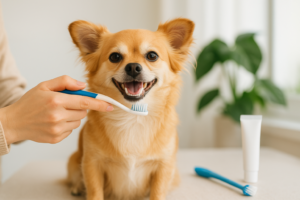Table of Contents
Introduction
Despite decades of vaccination and public awareness, canine parvovirus 2025 remains one of the most dangerous infectious threats to dogs worldwide. As a practicing vet, I still see puppies fighting for their lives in isolation wards sometimes, despite having started their vaccine series. What’s going on?
The virus has evolved, its spread is accelerating, and new challenges are making it harder for owners and vets alike to stay ahead. This article breaks down the 7 critical reasons why canine parvovirus 2025 is far from defeated and what every dog owner in Canada and beyond needs to know to protect their pet today.
⚠️ Medical Disclaimer: This blog is for informational purposes only and does not replace veterinary diagnosis or treatment. If your dog is showing signs of illness, contact your veterinarian immediately.
🐾 Key Takeaways: Canine Parvovirus 2025
- Canine parvovirus 2025 remains a serious and evolving threat, especially for puppies and unvaccinated dogs.
- The virus is mutating faster than current vaccines can keep up with, reducing protection in some regions.
- Outbreaks have surged in shelters and urban areas across Canada, the US, and Australia.
- New monoclonal antibody therapies (like CPMA) show promise, but prevention through full vaccination is still essential.
- Disinfection protocols, early symptom recognition, and limiting exposure during outbreaks are crucial in reducing risk.
- Cutting-edge diagnostics and vaccines are in development, offering hope, but dog owners must remain vigilant in 2025.
1. Why Canine Parvovirus 2025 Remains a Serious Threat
You can also visit: https://doglifeexpert.com/reasons-the-leptospirosis-vaccine-in-dogs/
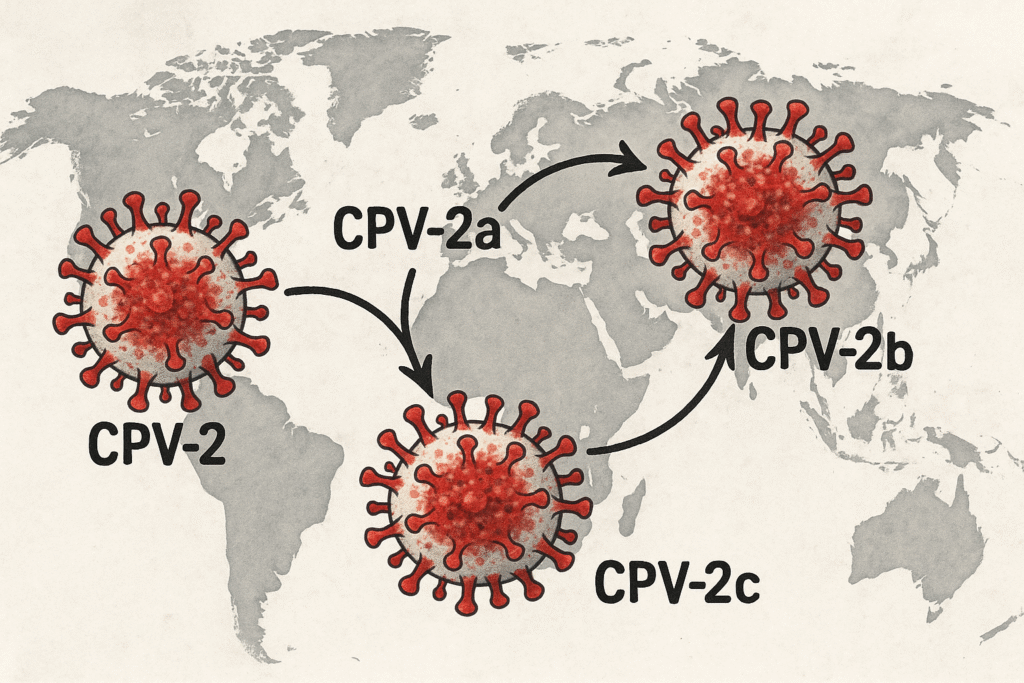
Even in 2025, canine parvovirus isn’t fading into veterinary history; it’s adapting, surviving, and resurging in new ways.
1.1. Extreme Environmental Resilience
Canine parvovirus 2025 can survive for months in soil, kennels, or on surfaces like dog bowls and leashes. It’s resistant to most household cleaners, requiring bleach-based disinfectants to inactivate it (Cornell Vet School).
This environmental durability allows the virus to linger in dog parks, shelters, and backyards, spreading silently until it strikes the next unprotected dog.
1.2. Alarming Mortality Without Treatment
Without prompt and intensive veterinary care, canine parvovirus 2025 has a mortality rate of up to 91% (Wikipedia). Even with treatment, hospitalization can cost thousands and doesn’t guarantee survival, especially if the diagnosis is delayed.
1.3. Recent Outbreaks Across the Globe
Outbreaks of canine parvovirus 2025 have been reported in places like Ontario, Canada (The Economic Times) and Ballarat, Australia (Herald Sun). In San Francisco alone, cases nearly doubled after November 2024 (SFGate).
Shelters, in particular, have become epicentres due to high dog turnover and often limited isolation space.
1.4. Urban Hotspots & Shelter Risks
As shelters fill up post-pandemic, parvo spreads faster among under-vaccinated puppies and stressed adult dogs. Staff struggle to isolate sick dogs quickly, and incoming animals may carry canine parvovirus 2025 unknowingly.
If your dog visits dog parks, groomers, or shelters even briefly, this risk becomes very real.
2. Viral Evolution: Why New Variants Are Outpacing Control
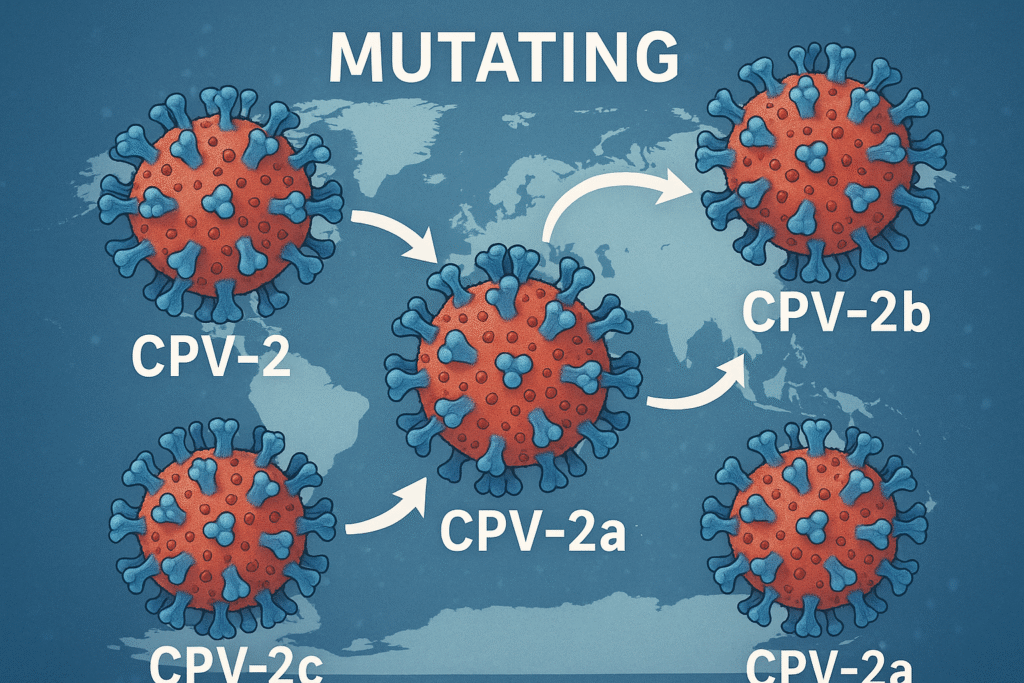
2.1. Canine Parvovirus 2025 Is Mutating Rapidly
Though it’s a DNA virus, canine parvovirus 2025 evolves with surprising speed, similar to RNA viruses like influenza. Mutations in the VP2 gene are driving changes in how the virus behaves and evades immune detection (Wikipedia).
This rapid evolution means some vaccine formulations may not offer full protection, especially in regions facing newer variants.
2.2. CPV-2c: A Variant on the Rise
The CPV-2c strain is becoming dominant across Europe and South America, showing lower antibody neutralization even in vaccinated dogs (Frontiers in Veterinary Science). This shift has major implications for global disease control and highlights the need for updated vaccines.
2.3. New Variant Spread via International Dog Movements
A novel CPV-2b variant emerged in Sicily, genetically linked to viral lineages from the Middle East and North Africa. It likely arrived through legal or illegal pet importation routes (MDPI Pathogens).
This underscores how canine parvovirus 2025 is no longer contained by borders—and that international monitoring is essential.
2.4. Genomic Surveillance in China: More Red Flags
A multi-year study in China from 2022 to 2024 found continuous viral evolution with increasing antigenic diversity, especially in central and southern provinces (PubMed). This research strengthens the case for global vaccine reform as canine parvovirus 2025 continues to diversify.
3. Diagnostic, Vaccine & Immune Advances in 2025
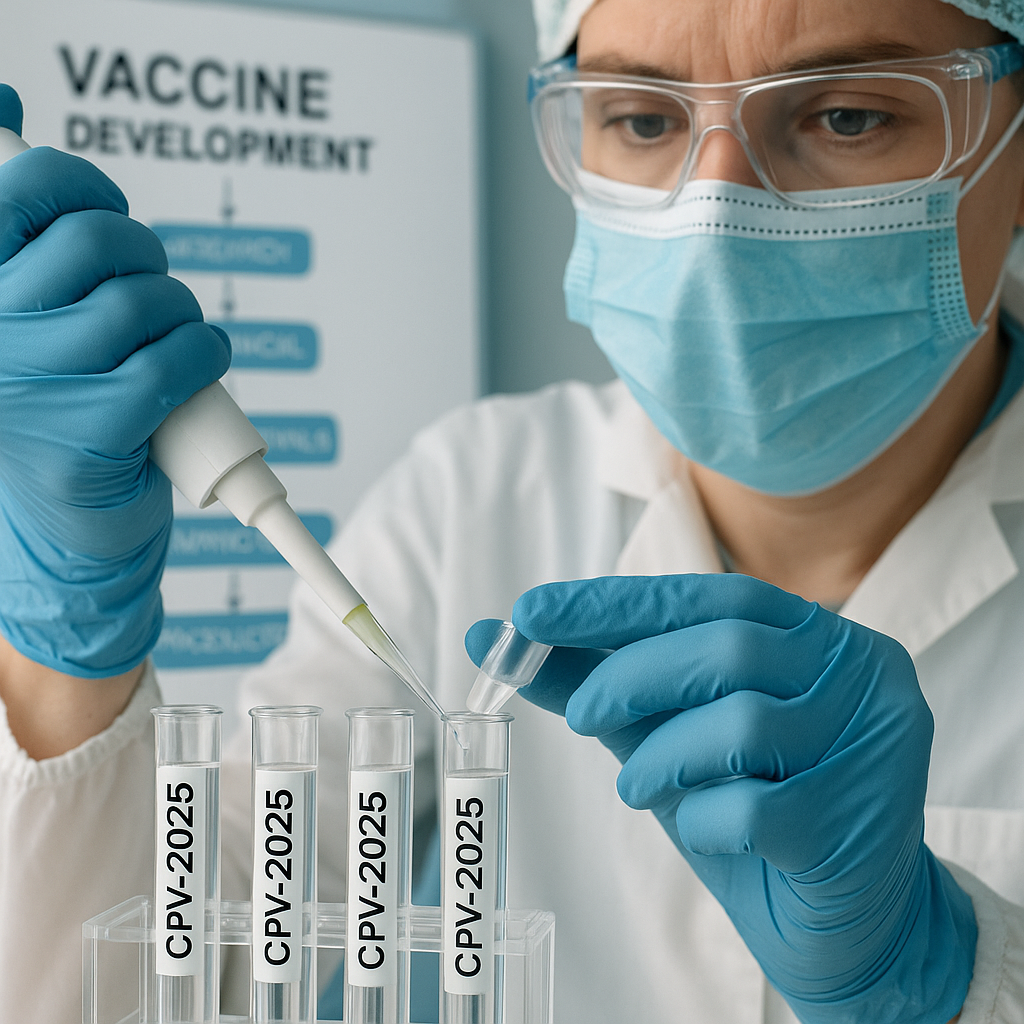
While canine parvovirus 2025 remains a threat, veterinary science is fighting back with innovations that improve detection, prevention, and immune response.
3.1. Next-Gen Diagnostic Biomarkers
Researchers have identified novel biomarkers that enhance early detection of canine parvovirus 2025, even before severe symptoms appear. These include:
- I-FABP (intestinal damage marker)
- CRP (inflammation marker)
- Electrolyte imbalances
- Cardiac enzymes
These markers help guide prognosis and treatment decisions (Frontiers in Veterinary Science).
3.2. Breakthrough Vaccine Research
Multiple new vaccine technologies are being explored to outpace viral evolution:
- Virus-like particle (VLP) vaccines: mimic the virus without replication risk
- Multi-epitope vaccines: target conserved viral regions like VP2
- Oral live-attenuated vaccines: show promise in providing immunity even in the presence of maternal antibodies (MDPI Microorganisms)
These innovations could offer better protection against canine parvovirus 2025, especially in high-risk populations.
3.3. Cornell’s Immune Neutralization Discovery
In early 2025, Cornell researchers found that only two or three antibodies are responsible for most CPV neutralization in dogs. This discovery could inform the design of more effective vaccines that stimulate stronger, more targeted immunity (Cornell Chronicle).
4. CPMA: A Game-Changer in Parvo Treatment

4.1. What Is CPMA?
Canine parvovirus monoclonal antibody therapy (CPMA) is one of the most exciting breakthroughs in veterinary medicine in 2025. This one-time IV treatment targets the virus directly, preventing it from entering and replicating inside cells.
Unlike traditional supportive care (fluids, antiemetics, antibiotics), CPMA works at the viral level, shortening disease course and improving survival.
4.2. Shelter-Based Trial: No Puppy Deaths
A trial conducted by Anderson Humane revealed powerful results: no puppies died when treated with CPMA, and most recovered in half the usual time. Staff also noted that symptoms resolved faster, and adoptable dogs spent less time in isolation.
As canine parvovirus 2025 continues to evolve, monoclonal antibody therapies could provide a lifesaving alternative in severe or resistant cases, especially in shelters, rescues, and outbreak-prone areas.
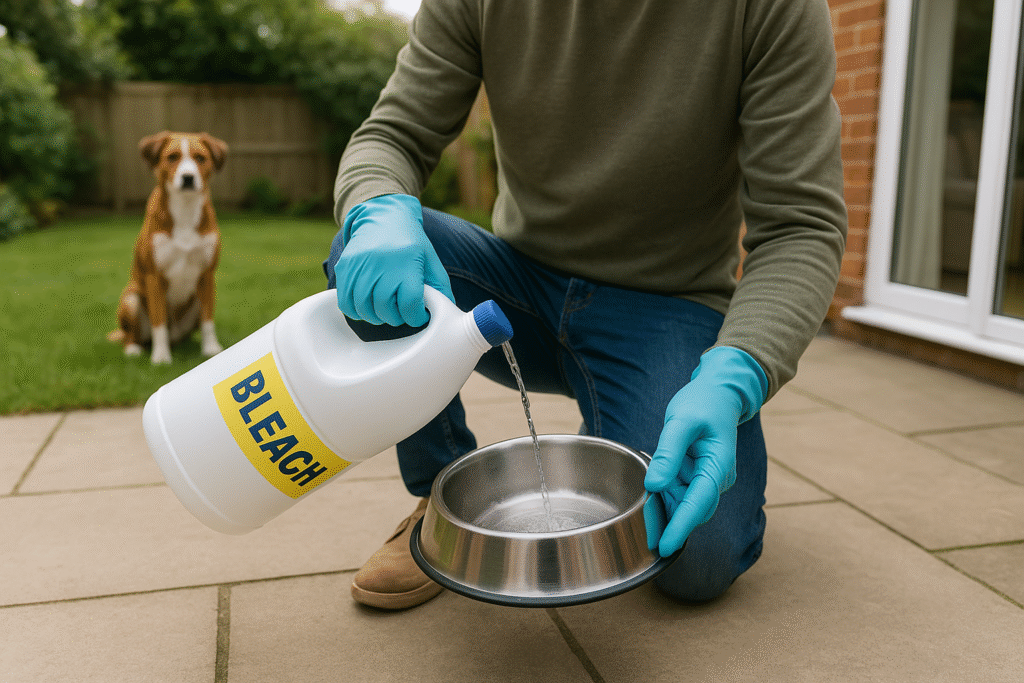
4.3. Cost & Access Challenges
While promising, CPMA is still expensive and not widely available. Some emergency clinics and university hospitals offer it, but cost remains a barrier for many pet owners. As demand grows and production scales, we may see broader access in late 2025 and beyond.
5. What Dog Owners Should Do in 2025
Despite scientific advances, your best defense against canine parvovirus 2025 remains prevention, preparation, and prompt action.
5.1. Follow the Full Vaccine Protocol
Puppies should start their parvo vaccines at 6 to 8 weeks, with boosters every 3 to 4 weeks until at least 16 weeks old. A final booster at one year and then every 1–3 years keeps adult dogs protected (AVMA, Goodheart Animal Health).
Missed a booster? Speak with your vet, delays leave your dog exposed to canine parvovirus 2025.
5.2. Disinfect Correctly Bleach or Bust
Parvo is notoriously resistant to standard cleaners. Use diluted bleach (1:30) to disinfect contaminated surfaces, kennels, and bowls (The Spruce Pets).
Avoid foot traffic in infected areas and wash hands, clothing, and shoes after visiting shelters or parks.
5.3. Know the Warning Signs
Canine parvovirus 2025 often begins subtly. Watch for:
- Lethargy
- Loss of appetite
- Vomiting
- Bloody diarrhea
- Dehydration
- Fever
If you notice these, seek veterinary care immediately. Early treatment dramatically improves outcomes.
5.4. Take Action During Outbreaks
If there’s a local outbreak:
- Avoid communal dog spaces
- Quarantine new pets for 14 days
- Use free vaccine clinics when offered
- Alert other dog owners
Check regional vet clinics or media like SFGATE or The Economic Times for CPV-2025 alerts.
5.5. Stay Informed
Veterinary science is evolving quickly. Follow updates from the AVMA, Cornell Vet School, and your local clinic.
6. Final Thoughts: Staying Ahead of Canine Parvovirus
Canine parvovirus 2025 is a persistent adversary evolving, spreading, and endangering even vaccinated communities. As a veterinarian, I’ve witnessed firsthand how quickly this virus can turn a playful puppy into a critical care case. Yet, with informed action, the odds shift in your favour.
Let’s recap the 7 critical reasons it still puts dogs at risk in 2025:
- Environmental survival makes it nearly impossible to eliminate.
- High mortality without rapid, aggressive treatment.
- Frequent global outbreaks tied to population movement and shelters.
- Mutation and variant spread outpacing vaccine updates.
- Reduced immune neutralization in certain CPV-2c strains.
- Cost and access limitations to advanced treatments like CPMA.
- Delayed or incomplete vaccination among at-risk populations.
Your best tools as a pet owner? Awareness. Vaccination. Rapid response. Clean environments. And staying connected with trusted veterinary sources. New treatments and vaccines are coming, but prevention remains the safest and most affordable strategy.

